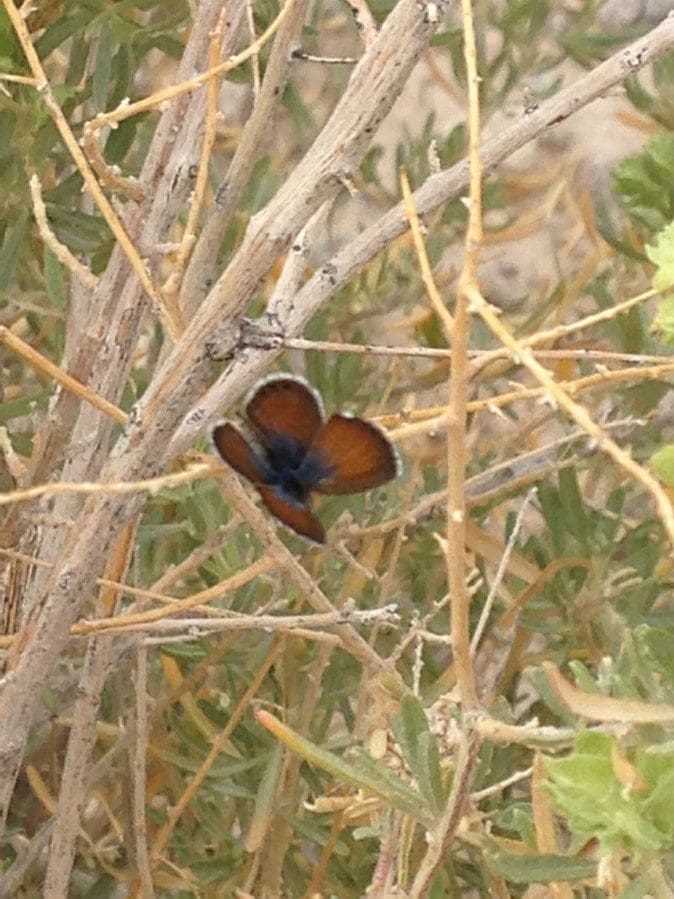The Western Pigmy Blue

WHERE IN SOUTHERN NEVADA CAN YOU FIND THE SMALLEST BUTTERFLY IN NORTH AMERICA?
… If you answered, “Clark County Wetlands Park,” you are correct! While the western pigmy blue butterfly (Brephidium exilis) holds the distinction of being the smallest in North America, it is a common resident in the Park’s managed wild areas.
Averaging less than three-quarters of an inch, wingtip to wingtip, the pigmy blue can be easy to miss, given its ability to blend in with its favored alkali meadow and riparian environments. The upper sides of the female adult wings are a dusty copper brown, with dull blue at the base of both wings. Wing fringes are mostly white, as are the undersides. There are three tiny black spots near the base of the wings, with a row of black spots found at the outer margins. Male pygmy blues are darker than the female, with dark blue highlights and white edging on its wings.
Both male and female butterflies can often be found near their “host” plants—plants that their caterpillars can live on. Males establish a territory in which they look for receptive females with which to mate. After mating, females lay eggs on all parts of the host plant, often on the upper sides of the host’s leaves. At the Park, host plants include pigweed, pickleweed, saltbush species (quailbush and four-wing saltbush), and other members of the goosefoot family. While western pygmy blues have no set breeding season, mating activity peaks during late summer and early fall. A female may lay two to four broods of eggs each year. After mating with a male, the female will lay her eggs on one of their host plants. Emerging caterpillars are greenish yellow in color, with small brown spots. They live on these plants for a time before pupating and metamorphosing into butterflies.
Like other butterflies, adult pygmy blues subsist on a diet of flower nectar, which they suck up using their proboscis — a hollow, straw-like appendage. These butterflies can be found in the Park year round, though activity may be hindered by colder temperatures and a lack of food. Predators include spiders, mantis, dragonflies, toads, lizards, birds and small mammals.
Next time you’re in the Park, find a nice stand of quailbush to watch, and be patient. You’re bound to be rewarded with a sighting of these tiny marvels!
– By Constance Carlson; photo by Gail Raffel
Please enjoy these YouTube videos:
Western Pigmy Blue 4K
Educational Tidbit day 58: Pigmy Blue Butterfly
